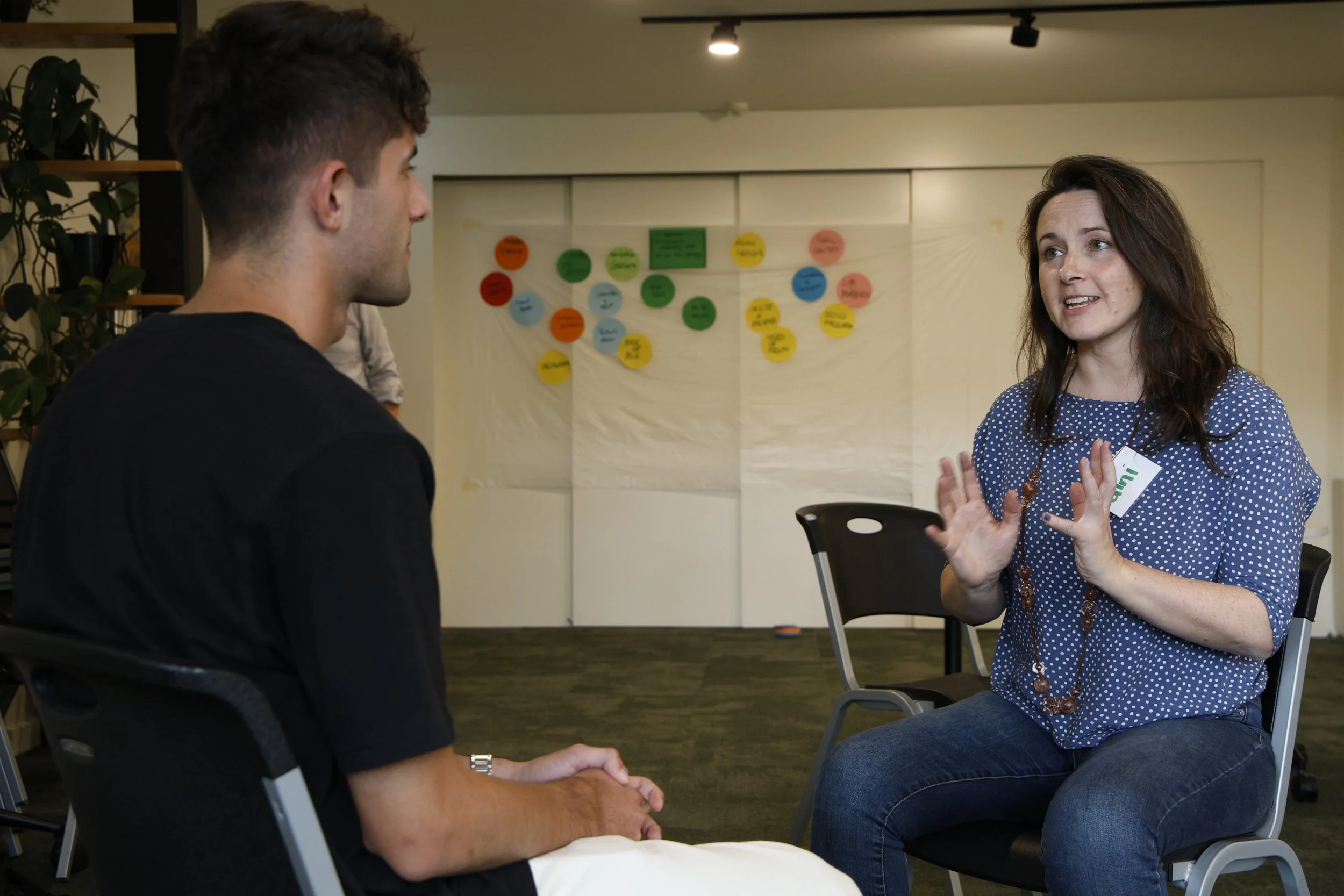How to manage workplace conflict before it escalates
Workplace conflict is inevitable, given the diversity of experience and the range of views in any work team. We've all experienced it - whether it's an increasingly aggressive email chain or a full-blown, heated exchange in a meeting.
Many of us baulk at these situations. It’s all too hard! How do we deal with conflict in the workplace in a way that feels rewarding rather than daunting?
At Groupwork Centre, we’re passionate about helping work teams and businesses face conflict head-on, turning tense moments into opportunities for growth and deeper connection. In this article, we're giving you a glimpse into our unique conflict resolution training model. Take these actionable steps to boost your confidence in tackling conflict rather than hoping it will just “work itself out”.
What is conflict?
Conflict is more than just a disagreement; it's a difference of opinion with an emotional tension that builds over time when perspectives clash and egos are bruised. Workplace conflict can manifest through open arguments or simmer quietly beneath the surface. While it's an uncomfortable part of any workplace, addressing these challenges with empathy and understanding will foster stronger and more emotionally resilient teams.
The two types of workplace conflict
Conflict usually manifests in two forms: pop-up conflict (quick digs, remarks, uncomfortable conversations) or unspoken conflict (more subtle interactions that create tension over time). If these tensions are not managed as they occur, groups can become stuck in a pattern of unhelpful behaviour that polarises around different views. When this happens, we often need to engage a facilitator or mediator to step us through a formal conflict resolution process.
Examples of pop-up conflict
Someone continuously cutting others off in a meeting
A colleague pushing the same idea over and over, ignoring other perspectives
Heated debates that quickly turn into a “who’s louder?” contest
Examples of unspoken conflict
A team member who gradually withdraws from speaking up
Subtle eye-rolls when another colleague is speaking
A quiet yet palpable awkwardness in the meeting room
How do we manage conflict that flares up?
Managing pop-up conflict is the art of guiding conversations from tension to understanding. It’s about navigating strong emotions, listening, and facilitating a solution that leaves everyone feeling heard. Resolving conflict is like being the umpire and coach; you pause the dispute, help people hear each other, and learn from their actions. This process allows them to shift from fixed positions to a negotiated way forward.
How to manage pop-up conflict at work
The best way to avoid the need for full-blown conflict resolution is to develop the skills to respond to conflict when it pops up in your day-to-day interactions. Think of it like watering a plant; consistent, mindful care reduces the risk of further problems emerging.
Our approach to pop-up conflict resolution
Notice it: Be aware of the signs, e.g. tense body language, raised voices or quick exchanges.
Manage self: Stay grounded. Take a deep breath to centre yourself in a wise space before responding.
Name it: Gently acknowledge what's happening without assigning blame: "It seems like we're getting a bit heated.”
Pause: Don't underestimate the power of a short break. It allows everyone to step back and return with clearer minds. “Should we pause for a second?"
Normalise: Remind the team that conflict is a natural part of working together and can be constructive.
Validate: Show you're listening and value what's being expressed: "I can see this is important to you" or "I see why this is frustrating."
Stand by: Be present without rushing to "fix" things. Sometimes, space is enough for the group to self-regulate.
Negotiate: how and when to proceed: As a group, decide whether to continue or revisit the discussion when everyone's more settled.
If you decide to proceed: Ensure everyone has a chance to contribute to the conversation and that they are validated and heard without interruption. Create space for any remedies such as agreements, apologies or decisions.
Why it’s essential to manage workplace conflict
No one loves dealing with conflict. It's tempting to ignore it, like letting the dishes pile up in the sink, hoping it'll all somehow take care of itself. But just like those dishes, the more conflict builds, the more overwhelming it becomes. When you manage workplace conflict early, you create a space where people feel heard, respected, and ready to collaborate, boosting trust, productivity and team morale.
Need support managing conflict in your workplace?
Don't let workplace friction build. Learn how to confidently manage and resolve conflict to keep your team running smoothly.
At Groupwork, we facilitate online and in-house conflict with our conflict resolution services and run our conflict-to-collaboration training to boost your team's confidence in navigating employee relationships.

